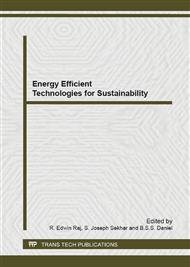p.338
p.344
p.351
p.359
p.364
p.371
p.378
p.388
p.392
Optimum Allocation of Distributed Generation Based on Nodal Pricing for Profit and Social Welfare Maximization
Abstract:
This paper presents a method using nodal pricing for optimal allocating distribution generations (DG) for profit maximization, reduction of loss in distribution network along with social welfare maximization. Inclusion of distributed generation (DG) resources in power system changes the power flows and the magnitude of network losses at the distribution side. A detailed analysis has been simulated in MATLAB with 33 bus distribution system. The Genetic algorithm optimization is used in this work to find optimal location and size of DG in radial distribution system. Applying nodal pricing to a model distribution network, it shows significant price differences between buses reflecting high marginal losses and by finding optimal size of DG maximizes the profit of distribution companies that use DG in their networks for obtaining multiple benefits.
Info:
Periodical:
Pages:
364-370
Citation:
Online since:
September 2013
Price:
Сopyright:
© 2013 Trans Tech Publications Ltd. All Rights Reserved
Share:
Citation:


